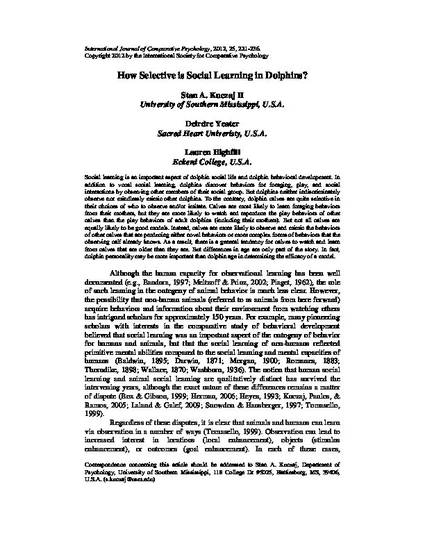
Social learning is an important aspect of dolphin social life and dolphin behavioral development. In addition to vocal social learning, dolphins discover behaviors for foraging, play, and social interactions by observing other members of their social group. But dolphins neither indiscriminately observe nor mindlessly mimic other dolphins. To the contrary, dolphin calves are quite selective in their choices of who to observe and/or imitate. Calves are most likely to learn foraging behaviors from their mothers, but they are more likely to watch and reproduce the play behaviors of other calves than the play behaviors of adult dolphins (including their mothers). But not all calves are equally likely to be good models. Instead, calves are more likely to observe and mimic the behaviors of other calves that are producing either novel behaviors or more complex forms of behaviors that the observing calf already knows. As a result, there is a general tendency for calves to watch and learn from calves that are older than they are. But differences in age are only part of the story. In fact, dolphin personality may be more important than dolphin age in determining the efficacy of a model.
Kuczaj, S. A. II, Yeater, D., & Highfill, L. (2012) How selective is social learning in dolphins?. International Journal Of Comparative Psychology 25(3), 221-236. Retrieved from https://escholarship.org/uc/item/9z25m1rq
